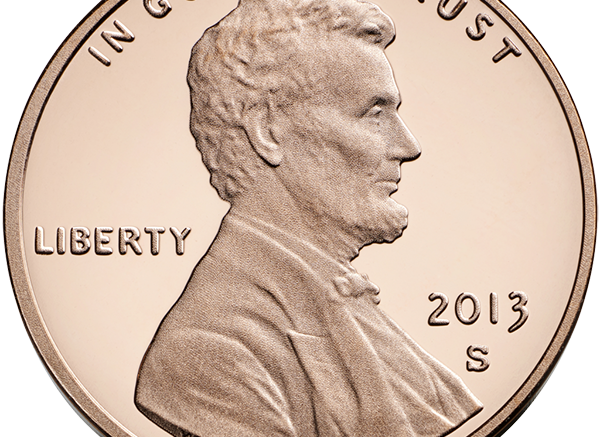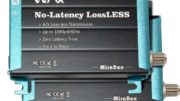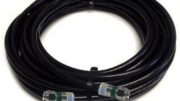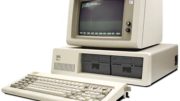You may not realize it, but you’re surrounded by copper. It’s in the wires that lead to your electrical outlets. It’s in the cables that feed your internet through the home, it’s in the cables that give you antenna TV, cable, or satellite. And, of course, you probably have quite a bit of it sitting in a large bucket holding every penny you’ve been given since the mid-2000s.
Copper is something incredibly special, and I haven’t even scratched the surface.
Copper as an conductor of electricity
As I first said in this article, copper conducts electricity better than almost anything else. The only metal more conductive is silver. As I write this, silver is just shy of $16 per ounce, while copper is not quite 16¢ per ounce. It’s 1/100th the price, give or take. That makes copper an incredible value if your goal is conducting electricity.
Of course that’s why copper is used for wiring. The electrical lines in your home are either solid copper or they are twisted strands of solid copper. In a very real sense, the world runs on copper.
Copper as a way to help signals travel
Broadcast signals are a form of electricity. An antenna made of copper would vastly outperform one made of aluminum. Unfortunately as I said here, the benefit wouldn’t last long because copper does oxidize when exposed to air. Copper oxide isn’t anywhere near as good a conductor as bare copper.
Copper is used in coaxial cables in order to help signals travel further. In many cases, a thin coating of copper goes around a steel wire. This still works well because of a property of cables where the actual signal doesn’t penetrate the cable. It sits on the surface, so that’s where the copper goes.
You’ll find copper in practically any cable more than half a millimeter thick. Wires thinner than that are hard to manufacture, with copper, they’re not durable and they don’t give enough benefit over other materials.
Copper as an item of value
Copper has been used for small coins for a very long time. A quick internet search suggests copper currency’s been around since for about 2300 years.
Copper as a material for currency makes sense because it’s a unique color for a metal. It’s also pretty tough but easy to melt and turn into something like a coin.
You might be aware that pennies aren’t made of copper anymore, at least not solid copper. They’re mostly made of zinc, which is cheaper. It’s sad to say but at one point the amount of copper in a penny threatened to be worth more than the penny itself, and I’m told it’s illegal to melt currency to use the metal for its base value.
Copper as a technology
Copper has been used as a toolmaking material for about 5,000 years. By itself, copper is too soft to be used as a tool, but if you mix it with tin you get bronze. Bronze was the first metal to be used extensively for tools. Mix copper with zinc and you get brass, which looks like gold and can be used for decorative items and musical instruments.
The late 19th century saw a rise in copper being used as a building material. Of course everyone knows the Statue of Liberty. If you live in an older city, though, you might be familiar with the mint green roofs you find on older buildings. Copper was used as a roofing and building material because it’s inexpensive, durable, and unlike iron it doesn’t rust. Instead it turns to a pleasant green patina which corrodes away much more slowly.
Copper was used as a pipemaking material — it still is — because it’s easy to shape. But, there’s another side to copper that we’re only really beginning to appreciate at this moment in time.
Copper might just save us again
It’s not clear who figured it out first, but copper saves lives. We know that soldiers in the ancient world would sharpen their bronze swords and rub the shavings into fresh wounds. The wounds healed faster.
Even before the onset of modern viral theory, copper was known for preventing disease. By the early 20th century, door handles and railings were commonly made of brass or bronze because it was known to slow the spread of disease. Chinese healers used it in medicines, and hospitals even used copper alloys in faucets and sinks to prevent infection.
We know now that copper disrupts the process of living cells. It’s capable of destroying bacteria and even viruses. This process is gentle enough that large lifeforms like humans aren’t at risk, but germs can’t stand a chance.
For the last 25 years or so, “new-age” proponents have used copper jewelry to ward off not only germs but also bad vibrations. I can’t speak to whether it works for the second purpose but who knows.
Today there’s a renewed interest in copper, brass, and bronze to prevent viral spread in public areas. It’s not the only thing that will help us, but it makes sense to take a look at copper once more. Brass and bronze fell out of favor because of the development of cheap ways of making stainless steel. It’s funny but because steel “looks” cleaner for a longer time, it replaced the material that actually “was” cleaner.
Oh yeah, paying for this article
If you’ve gotten to the bottom of this article and you were entertained, consider shopping at SolidSignal.com for copper wiring and plenty of other things. They keep the lights on here and that’s something I’m very grateful for.





